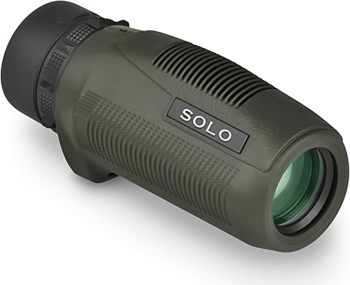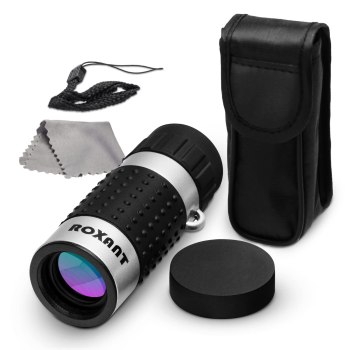- Compact size
- Lightweight
- Durable build
- Waterproof and fog-proof
- Clear optics
- Lightweight and compact
- Smartphone compatible
- Clear optics
- Durable build
- Non-slip grip
- Limited field of view
- Lower magnification
Vortex Optics Solo 10x25 vs Roxant Ultra-Light Mini
When it comes to compact and portable optical devices, two popular options among outdoor enthusiasts and nature lovers are the Vortex Optics Solo 10x25 and the Roxant Ultra-Light Mini. Both of these monoculars offer a unique set of features that cater to different needs and preferences.
Design and Build
The Vortex Optics Solo 10x25 has a sturdy and ergonomic design, weighing in at 5.6 ounces. Its compact size (4.1 inches long) makes it easy to carry around, and the rubber armor provides a secure grip. The Roxant Ultra-Light Mini, on the other hand, is even lighter (3.2 ounces) and more compact (3.5 inches long), making it an excellent choice for backpackers or travelers who want to minimize their load.
Optical Quality
Both monoculars offer impressive optical quality, but with some differences. The Vortex Optics Solo 10x25 features a 25mm objective lens and a 10x magnification power, providing clear and sharp images. The Roxant Ultra-Light Mini also has a 25mm objective lens, but with an 8x magnification power. While the Roxant's image quality is still excellent, it may not be as detailed as the Vortex Optics Solo 10x25, especially at longer distances.
Field of View
The field of view (FOV) is another important aspect to consider when choosing between these two monoculars. The Vortex Optics Solo 10x25 has a FOV of 293 feet at 1,000 yards, while the Roxant Ultra-Light Mini has a slightly narrower FOV of 260 feet at 1,000 yards. This means that the Vortex Optics Solo 10x25 provides a wider view, making it easier to track moving objects or scan a larger area.
Additional Features
Both monoculars are waterproof and fog-proof, ensuring reliable performance in various weather conditions. However, the Vortex Optics Solo 10x25 has a slightly more advanced feature set, including a close focus distance of 6 feet and a twist-up eyecup for comfortable viewing with or without glasses. The Roxant Ultra-Light Mini, on the other hand, has a close focus distance of 10 feet and a more basic eyecup design.
Conclusion
In conclusion, both the Vortex Optics Solo 10x25 and the Roxant Ultra-Light Mini are excellent choices for those seeking high-quality monoculars. The Vortex Optics Solo 10x25 offers superior optical quality, a wider field of view, and more advanced features, making it an ideal choice for serious birdwatchers, hunters, or outdoor enthusiasts who require detailed observations. The Roxant Ultra-Light Mini, while slightly less powerful, is an excellent option for those who prioritize ultra-lightweight design and compactness, such as backpackers or travelers. Ultimately, the decision between these two monoculars depends on your specific needs and preferences.































